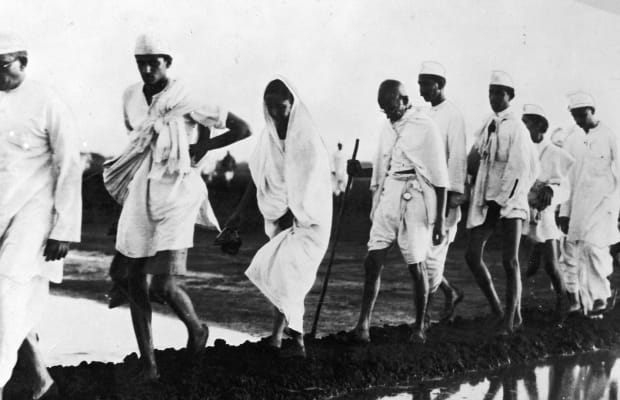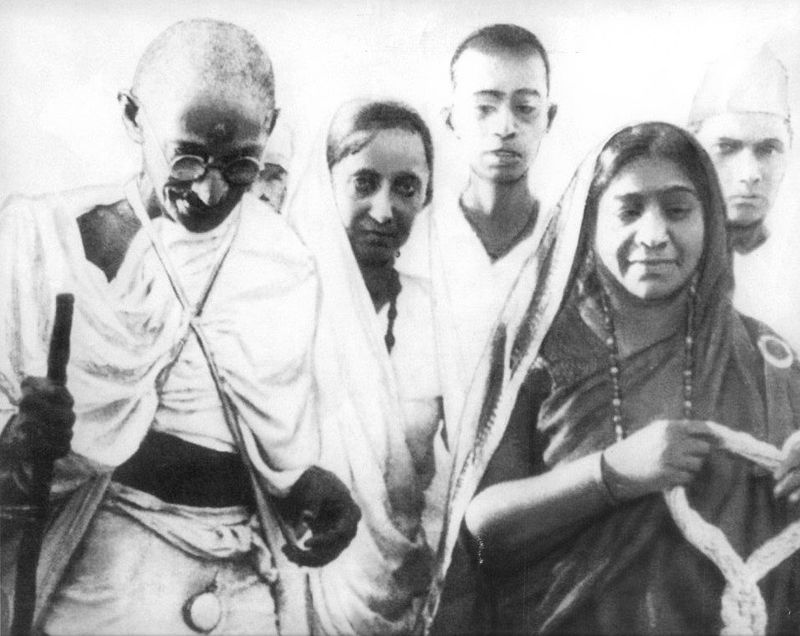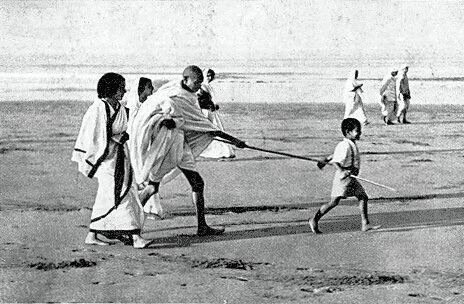On the 92nd anniversary of the Dandi March, Union Home Minister Amit Shah launched the ‘Dandi Cycle Yatra’ in Ahmedabad on Saturday. Gujarat Vidyapeeth’s Dandi Cycle Yatra set out from Kocharab Ashram in Ahmedabad for Dandi. Mahatma Gandhi organized the Dandi March or Salt Satyagrah from the Sabarmati Ashram in Ahmedabad, Gujarat, to the village of Dandi on the state’s coast. Mahatma Gandhi’s nonviolent movement against British rule included the Salt Satyagraha.

The 24-day march, which took place from March 12 to April 5, 1930, was a protest against the British salt monopoly. The march marked the beginning of the civil disobedience movement, which was founded on Gandhi’s principle of nonviolence, or Satyagraha. After the non-cooperation movement of the early 1920s, the Dandi march was easily the most significant organized movement against the British Raj. It was a true turning point in the Indian Independence movement, attracting national and international media attention as well as world leaders.
What was Gandhi’s motivation for organizing the Dandi March?
The 1882 Salt Act gave the British a monopoly on salt production and distribution. Despite the fact that salt was readily available along India’s coasts, Indians were forced to purchase it from colonizers. Gandhi decided that if there was one product that could be used to launch civil disobedience, it was salt. “Salt is perhaps the greatest necessity of life, next to air and water,” he explained, despite the fact that many in the Congress’s working committee were skeptical. The British government, including Viceroy Lord Irwin, did not take a campaign against the salt tax seriously.
On March 8, Gandhi announced his decision to defy the salt laws in front of a large crowd in Ahmedabad. “For me, that is one step, the first step, toward full freedom,” he said, according to historian Ramachandra Guha’s book, “Gandhi: The Years That Changed the World (1914-1948).” “Gandhi wanted this to be a long march, or perhaps a pilgrimage, where his leisurely progress would enthuse people along the way and attract wider publicity,” Guha wrote. Finally, he chose Dandi as the location where the salt law would be violated.
What happened during the march?
On the eve of the march, Ahmedabad was buzzing with anticipation. The Sabarmati ashram was surrounded by a large crowd that stayed all night. That night, Gandhi wrote to Nehru, informing him of rumors of his arrest. That did not happen, and Gandhi awoke the next day as a free man.
He gathered his walking companions, a group of 78 genuine ashramites. Manilal Gandhi of South Africa was among them, as were several others from across India. “There were 31 marchers from Gujarat, 13 from Maharashtra, and smaller contingents from the United Provinces, Kerala, Punjab, and Sindh, with Tamilnadu, Andhra Pradesh, Karnataka, Bengal, Bihar, and Orissa each sending one man.” “The marchers’ diversity was social as well as geographical, with many students and khadi workers, several ‘untouchables,’ a few Muslims, and one Christian among the chosen marchers,” Guha wrote. Despite the fact that women also wanted to participate in the march, Gandhi preferred to keep it exclusively for men.
They set out at 6:30 a.m., surrounded by a large crowd who greeted them with flowers, greetings, and rupee notes. They stopped in a number of villages along the way, where Gandhi delivered rousing speeches about the need to boycott the salt tax to large crowds.
Gandhi was greeted by adoring crowds at every stop, according to newspapers of the time. “Indescribable scenes of enthusiasm marked the progress of the Swaraj Army on this fourth day,” the Bombay Chronicle reported. “The rich and the poor, millionaires and mazurs [workers], ‘caste’ Hindus and so-called untouchables, one and all, vied with one another in honoring India’s great liberator.” However, other publications, particularly international publications such as Time magazine and The Daily Telegraph, painted a much bleaker picture of the march.
On April 5, Gandhi arrived in Dandi. He went to the sea with the other marchers the next day, early in the morning, and picked up lumps of natural salt lying in a small pit. The act was symbolic, but it was widely covered in the media, and it sparked a series of other acts of civil disobedience across India.
While picking up the salt in his hand, Gandhi said, “With this, I am shaking the foundations of the British Empire.” “Now that the technical or ceremonial violation of the Salt Law has occurred, anyone willing to risk prosecution under the Salt Law is free to manufacture salt wherever he wishes and wherever it is convenient.” “My advice is that workers everywhere should manufacture salt to use it and instruct the villagers to do so,” he told a Free Press representative.
What was the Dandi March’s significance?
The march’s popularity caused the British government to be shaken. By March 31, it had arrested more than 95,000 people. Gandhi went to the Dharasana salt works the following month, where he was arrested and taken to the Yerawada Central Jail.
Similar acts of civil disobedience occurred in other parts of India after Gandhi broke the salt laws in Dandi. Volunteers led by Satish Chandra Dasgupta walked from Sodepur Ashram to Mahisbathan village to make salt, for example. Another group of marchers was led by K.F Nariman in Bombay to Haji Ali Point, where they prepared salt in a nearby park.

The boycott of foreign cloth and liquor was accompanied by the illegal manufacture and sale of salt. What began as a salt satyagraha quickly evolved into a mass satyagraha. In Maharashtra, Karnataka, and the Central Provinces, forest laws were broken. Land and chowkidar taxes were not paid by peasants in Gujarat and Bengal. Acts of violence erupted in Calcutta, Karachi, and Gujarat, but Gandhi refused to call a halt to the civil disobedience movement this time, unlike during the non-cooperation movement.
Only in 1934 did the Congress Working Committee decide to put an end to the Satyagraha. The Salt Satyagraha had some long-term effects, despite the fact that it did not immediately lead to self-rule or dominion status. Richard L. Johnson, author of ‘Gandhi’s experiments with truth: Essential writings by and about Mahatma Gandhi,’ wrote, “Indian, British, and world opinion increasingly recognized the legitimate claims of Gandhi and the Congress for Indian Independence.” Furthermore, the British realized that their control of India now rested entirely on the consent of the Indians.

